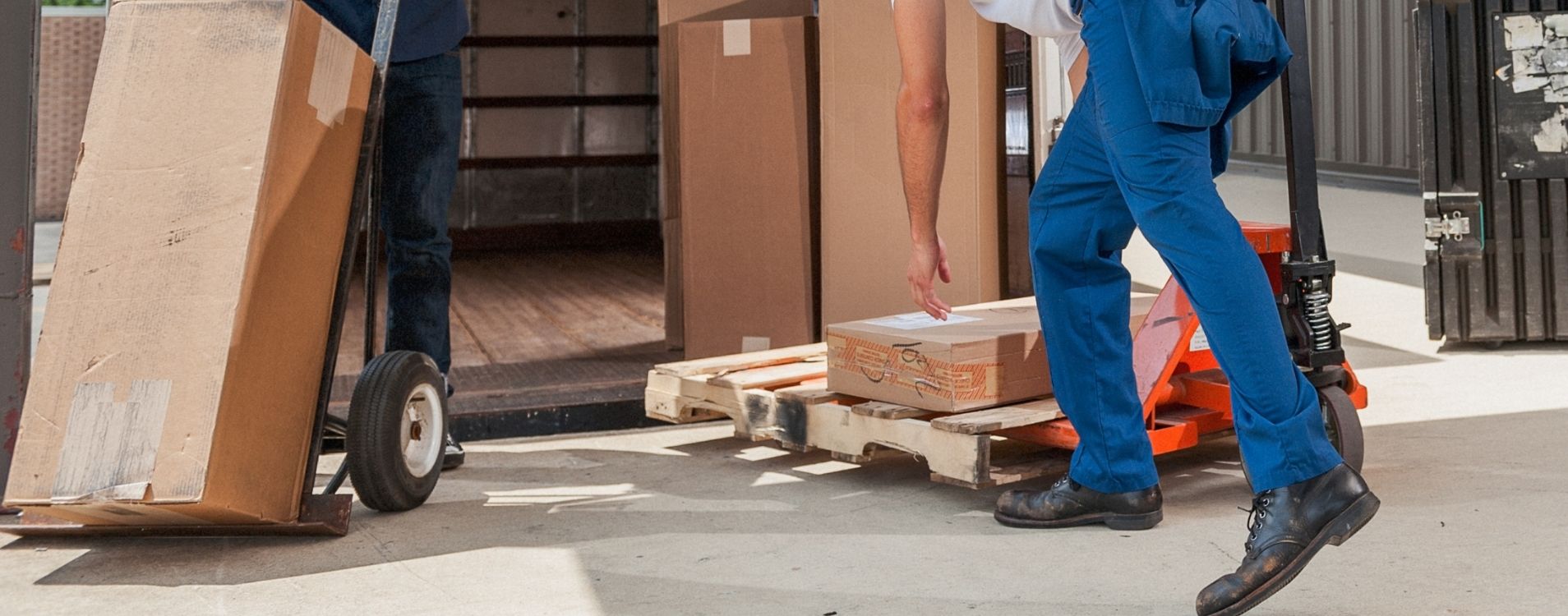Live-Load Vs. Drop-And-Hook Trucking: Which Is Best?
You might start your carrier business with power-only trucking, hauling someone else’s trailers. Once you get a trailer of your own, you can move on to live-load trucking. When you start to get a fleet of trailers together, you’re set up for the third way to collect freight: drop-and-hook trucking (see sidebar for definitions).
This is a common progression for owner-operators and growing fleets. There’s a low barrier to entry for power-only work; all you need is a rig. But that limits the jobs you can take, so once you build capital, you buy your own trailer. That sets you up for live-load work. You’ll need at least two trailers to accept most drop-and-hook contracts: one at the facility (shipper or receiver) and one on the truck. Build capital from power-only and live-load jobs, buy a few trailers, and you’ll greatly expand the brokers and shippers you can work with.
| What is live-load trucking?Live-load trucking is a standard way to collect and deliver freight. The driver pulls up to the dock, and the shipper loads the empty trailer. On the receiving end, a team moves in and unloads the freight.What does “drop-and-hook” mean in trucking?Drop-and-hook trucking is another option for collecting and delivering loads. Here’s how it works: The shipper pre-loads a trailer. The driver pulls the power unit up to the loaded trailer, hooks up, and moves the freight to a receiver. Instead of waiting around while they unload the freight, drivers simply drop off the trailer. If you’re lucky, the receiver will have another waiting; the driver can lock onto the next full trailer and repeat the process along a set route. |
Of course, there are advantages and disadvantages to both live-load and drop-and-hook trucking, and mileage may vary (pun very much intended). You’ll need to consider your costs and capabilities to choose the trucking jobs that maximize profits. Here are some details that can help you decide between live-load and drop-and-hook jobs.
Want more tips on running your trucking business? Find expert advice on everything from taxes to driver retention in our blog.
Live-Load Trucking: Practical Considerations
If you get paid by the mile, you don’t want to waste time sitting around at a dock. That’s the main disadvantage of live-load trucking; still, it’s an industry standard, and as long as you set your pricing correctly, live-load trucking is a great revenue stream. Here are some of the points to take into account when considering a bid on a live-load job:
1. With live-load trucking, you have to factor in dock time.
The industry standard for loading and unloading tractor trailers is about two hours, give or take. If you know four hours of your day will be spent at docks, you might not be able to take as much work. Remember that the Federal Motor Carrier Safety Administration’s Hours of Service regulation limits drivers to 60 hours of driving in each seven-day period (or 70 hours across eight days). They can only stay on duty for 14 hours at a time. So, that four hours of dock time cuts your allowed driving time down considerably.
2. Detention at the dock is common.
Some docks run more efficiently than others, which is why most shipping contracts include a detention provision. Detention is a technical term that refers to loading and unloading times that go over an agreed timespan, usually two hours. The shipper or receiver will pay a detention fee if they hold a driver up at the dock for too long—and that fee may or may not make up for all the business you could have taken if the dock staff moved faster.
In short, don’t depend on a two-hour loading standard; live loads are unpredictable.
3. You’ll have to keep rigid appointment times, complicating logistics.
Some docks operate on a first-come, first-served basis. That’s great if the dock’s open when you arrive, but it also means you’ll run into lines—and potentially long delays. Larger facilities usually make carriers schedule dock appointments. Get delayed on the road, and you might have to wait a whole day for a new dock time. And docks are usually only open for set hours, so if the truck can’t get to a receiving facility before the doors close, you’re looking at another day of waiting.
Finally, remember that you’ll need your own trailer to take live-load jobs—and that trailer comes with ongoing costs. Keep track of what you’ll spend on maintenance, insurance, storage, and other costs of ownership to right-size your trailer fleet. Look at the data and include these costs into your rates. You can charge more for live-load hauls than power-only work, but that doesn’t necessarily make it more profitable. You have to consider the added costs of trailer ownership to get the most out of your business; shoot for a 10% profit margin, however that adds up, according to your cost analysis.
Drop-And-Hook Trucking: Pros And Cons
At first glance, drop-and-hook trucking seems to offer a lot of advantages over live-load work. You dispense with all the complications of the dock. Still, it’s an option that really only opens up when you own a whole fleet of trailers—and it introduces new challenges, too. Here’s what small fleet operators should know about drop-and-hook trucking:
1. You have more flexibility on arrival time—sometimes with 24/7 access.
This is the key advantage of drop-and-hook work. Shipping and receiving facilities may only have dock staff available for eight hours of the day, but they’ll probably keep their gates open longer than that. If you’re just picking up a trailer, you don’t need to schedule an appointment or wait in line. Many facilities have round-the-clock security, which allows them to operate the yard 24/7. That’s a terrific advantage for carriers.
2. You give up full control over your trailers.
With live-load trucking, the driver gets to know a single trailer, and they understand how to maintain and protect that asset. In a drop-and-hook scenario, you don’t have this level of control. Facility staff operate yard tractors to move your trailer to and from the dock or into position for pick up. Trailers sometimes get damaged. The best-case scenario is that the driver notes the damage during the pre-trip inspection; then, the facility owner might replace the dented sidewall or at least pay for the repair. But if you pick up the trailer in the dark early morning hours, you may not spot damage until later in the day; at that point, you may have to eat the repair cost since you can’t prove the damage occurred on facility property. That’s not an issue in live-load trucking.
3. You’ll need trailer interchange insurance.
To allow these yard tractors to move your trailers, you need additional insurance, a trailer interchange policy. That’s also true if you hook to a trailer owned by another company. These policies usually aren’t that expensive in the broad scheme of things—maybe $40 per week—but that’s an additional cost to include in your pricing projections.
4. Drop-and-hook capabilities give you access to more jobs.
Some brokers and shippers require the drop-and-hook relationship; they simply won’t hire you if you can’t do it. These opportunities may include steady routes, in which you both drop off and pick up loaded trailers at either end of the journey. That’s the kind of ongoing business relationship that provides long-term stability.
Ultimately, offering drop-and-hook services opens up more opportunities for your business.
Planning For The Business Cycle In Drop-And-Hook And Live-Load Trucking
You can’t say live-load trucking is better or worse than drop-and-hook; the decision boils down to your costs, pricing, and capabilities. Will the job meet your profit goal? That’s the real question. But money on paper won’t help you meet day-to-day expenses. Whether the work is power-only, live-load, or drop-and-hook, carriers should also consider the business cycle—the time between tender (the load offer from a shipper or broker) to payment.
Trucking business cycles vary widely. Customers may take up to 60 days to pay an invoice, but they also might pay in a week, or two, or 30 days, or 45 days, or…who knows? It all adds up to uncertain cash flow. That’s not helpful when you get a sudden repair bill or find yourself short on payroll.
Besides, there are administrative costs to setting up accounts with multiple brokers and shippers. You have to fill out a carrier packet. You have to make sure the billing department has all your updated information. That’s well worth it for long-term work, but what about a shipper hiring you for a single job?
Whether you offer live-load trucking or drop-and-hook, invoice factoring is the solution to both challenges. Factoring companies pay your invoices today, then collect from your customer, all for a low percentage fee (between 1.99% and 3.24% at Bobtail). Not only does that ensure reliable cash flow, it also removes the administrative headaches of billing multiple companies. Simply upload your rate confirmation and bill of lading on the Bobtail mobile app and get funded, all without contracts, hidden fees, or volume requirements. Sign up here to start factoring with Bobtail.




